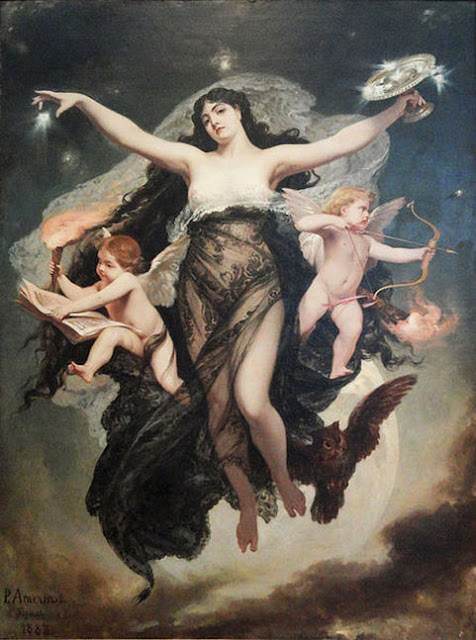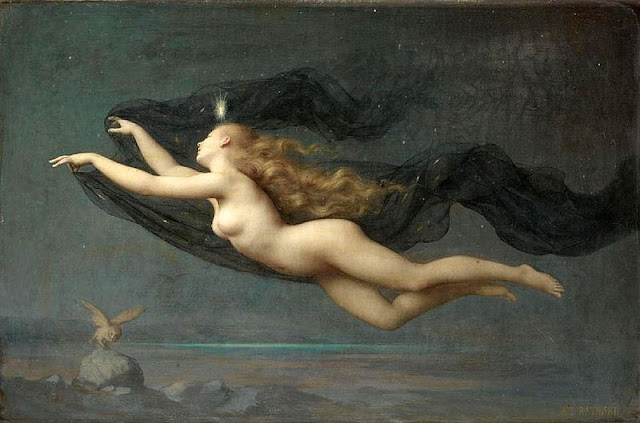Nyx, the daughter of Chaos, being the personification of Night, was, according to the poetic ideas of the Greeks, considered to be the mother of everything mysterious and inexplicable, such as death, sleep, dreams, &c. She became united to Erebus, and their children were Aether and Hemera (Air and Day- light), evidently a simile of the poets, to indicate that darkness always precedes light.
Nyx inhabited a palace in the dark regions of the lower world, and is represented as a beautiful woman, seated in a chariot, drawn by two black horses. She is clothed in dark robes, wears a long veil, and is accompanied by the stars, which follow in her train.
In Hesiod's Theogony, Nyx is born of Chaos. With Erebus (Darkness), Nyx gives birth to Aether (Brightness) and Hemera (Day). Later, on her own, Nyx gives birth to Moros (Doom, Destiny), the Keres (Destruction, Death), Thanatos (Death), Hypnos (Sleep), the Oneiroi (Dreams), Momus (Blame), Oizys (Pain, Distress), the Hesperides, the Moirai (Fates), Nemesis (Indignation, Retribution), Apate (Deceit), Philotes (Friendship), Geras (Old Age), and Eris (Strife).
In his description of Tartarus, Hesiod locates there the home of Nyx, and the homes of her children Hypnos and Thanatos. Hesiod says further that Nyx's daughter Hemera (Day) left Tartarus just as Nyx (Night) entered it; continuing cyclicly, when Hemera returned, Nyx left. This mirrors the portrayal of Ratri (night) in the Rigveda, where she works in close cooperation but also tension with her sister Ushas (dawn).
Nyx inhabited a palace in the dark regions of the lower world, and is represented as a beautiful woman, seated in a chariot, drawn by two black horses. She is clothed in dark robes, wears a long veil, and is accompanied by the stars, which follow in her train.
In his description of Tartarus, Hesiod locates there the home of Nyx, and the homes of her children Hypnos and Thanatos. Hesiod says further that Nyx's daughter Hemera (Day) left Tartarus just as Nyx (Night) entered it; continuing cyclicly, when Hemera returned, Nyx left. This mirrors the portrayal of Ratri (night) in the Rigveda, where she works in close cooperation but also tension with her sister Ushas (dawn).


Comments
Post a Comment